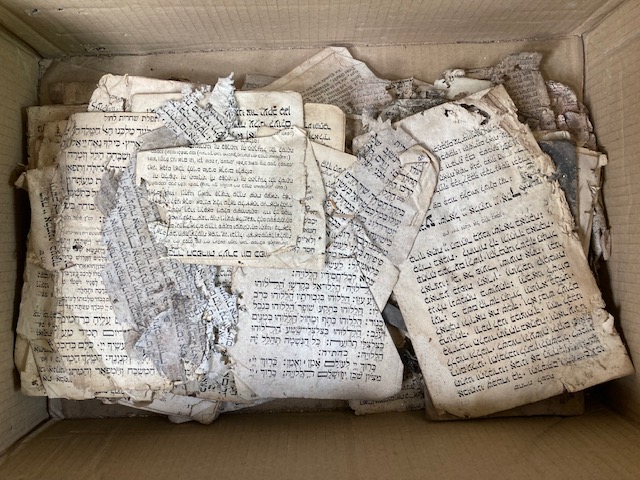 Foto: Berthold Herberz
Foto: Berthold Herberz
A geniza, genizah (storehouse, depot, store) is used to store used Jewish liturgical writings. In the Vöhl synagogue, the attic was used for this purpose. Texts that were no longer used were locked away here. They must not simply be thrown away. In 1999, the genizah was found by Jürgen Evers.
Almost all of the texts are printed texts in Hebrew script - some supplemented by German translations. Three prayer books, an edition of the Torah (5 books of Moses), a collection of sermons and a Passover book can still be recognised. One script, the Torah (5 books of Moses), is in Yiddish - written in Hebrew letters. One page is in German: it was part of a school textbook.
Hebrew is read from right to left; it is also written from right to left. And the books are also opened from the back, according to our understanding. This also applies to the bilingual editions in Hebrew/German.
In addition to the described books or book fragments, a large part of the Genisa consists of book pages that are only loosely connected or individual and can no longer be categorised.
Siddurim, Prayer books for worship services
A Siddur is used in everyday life and on Shabbat. It contains prayers and blessings.
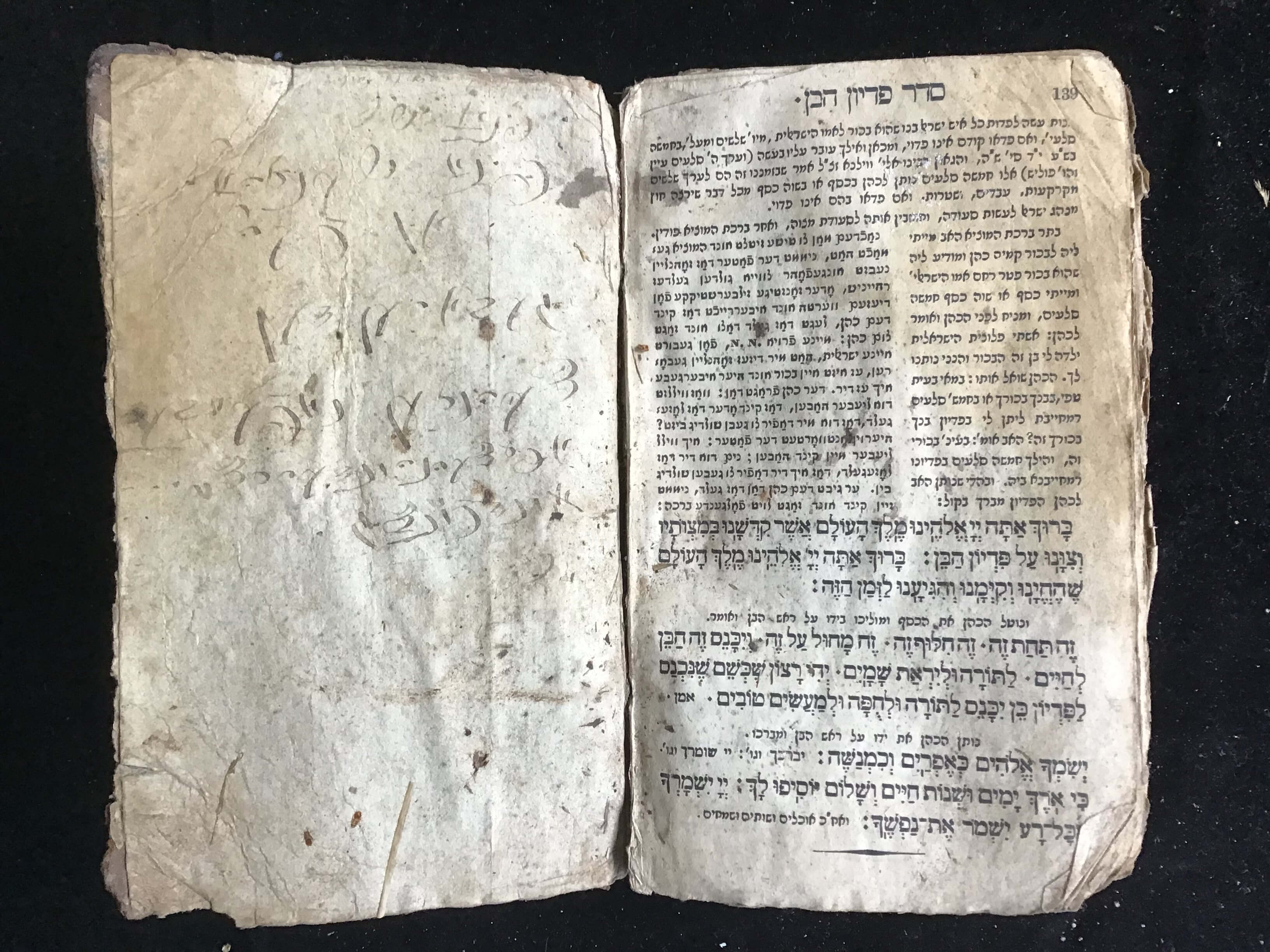 Siddur, prayer book with complete binding. Title page lost. Hebrew. 18x11x2cm. Owner's name on the front cover not legible. The back cover (see photo) probably bears names of close relatives to mention them in prayer.
Siddur, prayer book with complete binding. Title page lost. Hebrew. 18x11x2cm. Owner's name on the front cover not legible. The back cover (see photo) probably bears names of close relatives to mention them in prayer.
 Siddur, prayer book with front cover only. The owner was Sigmund Lazarus from Vöhl. Hebrew. 18x11x1,5cm. Published by Lehrberger, 1881, Rödelheim.
Siddur, prayer book with front cover only. The owner was Sigmund Lazarus from Vöhl. Hebrew. 18x11x1,5cm. Published by Lehrberger, 1881, Rödelheim.
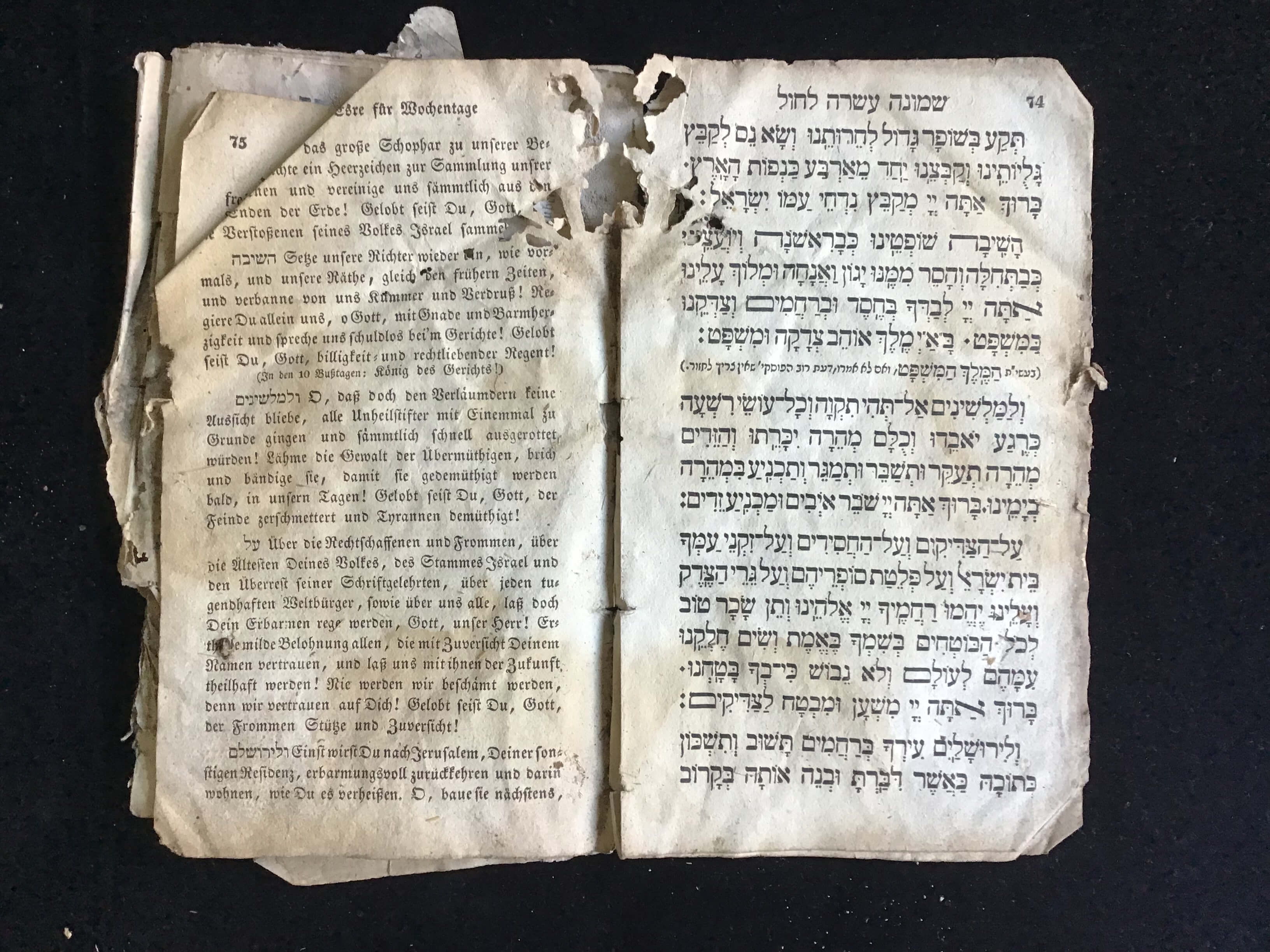 Siddur, prayer book without cover and flyleaf. 20x12x2cm. Hebrew - German.
Siddur, prayer book without cover and flyleaf. 20x12x2cm. Hebrew - German.
Machzor, Book for Passover
A Machzor is one of the prayer books used for Jewish holidays.
 Prayer book (Machzor) for Passover. Without cover and title page, Hebrew. 16x18x?cm.
Prayer book (Machzor) for Passover. Without cover and title page, Hebrew. 16x18x?cm.
Prayer books received
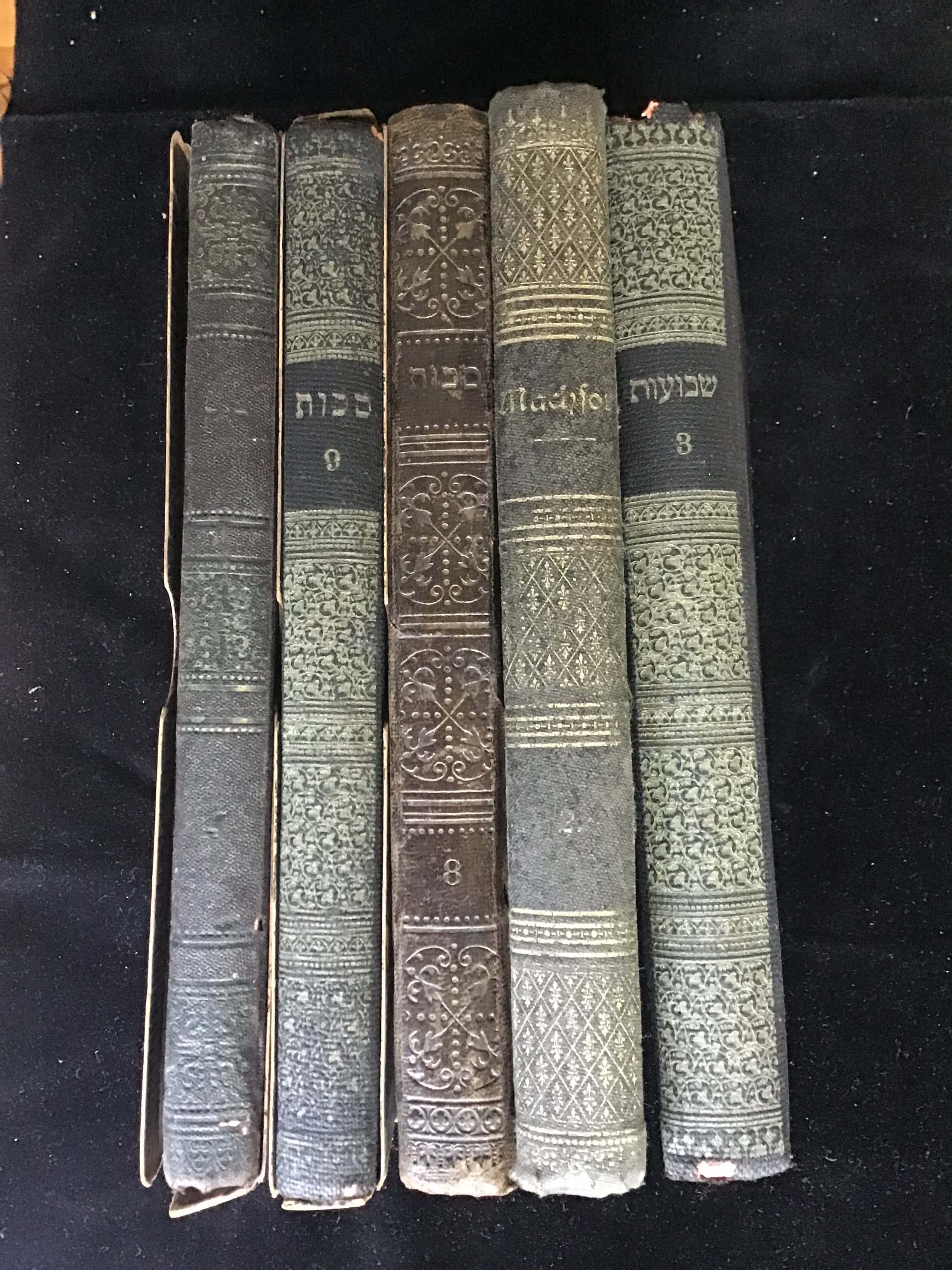
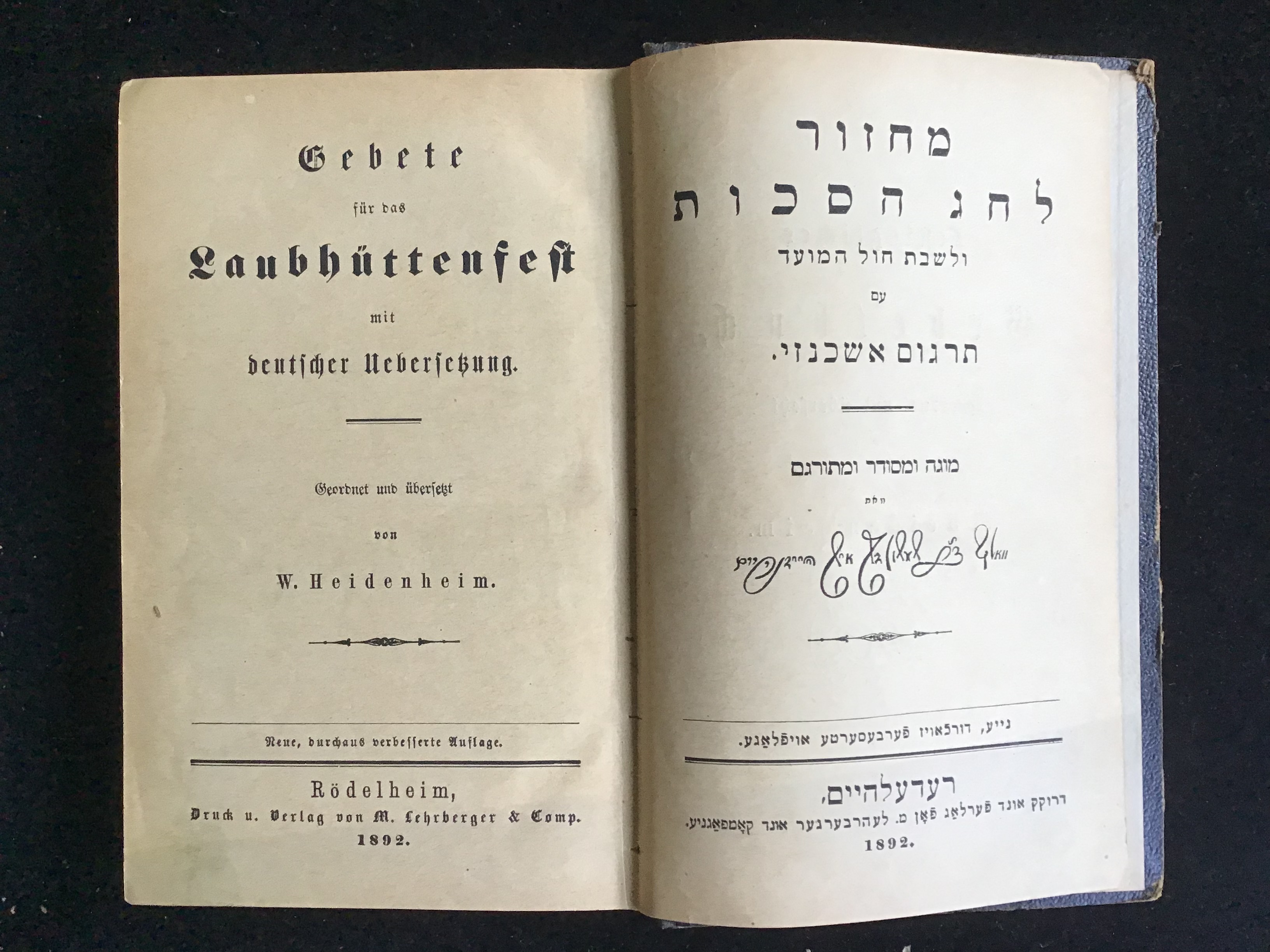
For comparison, 5 well-preserved machzorim. A complete edition has 9 volumes. Hebrew - German. 1892 and 1898, Lehrberger, Frankfurt. 20x13x2cm. The finds from the genizah originally looked like this. The leading publisher at this time was Lehrberger - Verlag und Druckerei in Rödelheim, Frankfurt am Main. After the publishing house Dr. Felix Kauffmann - Hebrew Publishing Co. in New York had initially taken over the programme, the successor of the Verlag Victor Goldschmidt in Basel, where the prayer books are printed today under the keyword "Rödelheimer Ausgabe". The five books are a gift from the Jüdischen Gemeinde Marburg.
The Machzor from the geniza is probably not one of the “Rödelheim editions.” It has a different format.
Torah, (Five Books of Moses) in Yiddish
In Judaism, it is the Torah, which consists of five books. The term “Five Books of Moses” comes from a Christian perspective.



 Five books of Moses in Yiddish in Hebrew script. Binding and title page missing. 20x17x5cm. The book is illustrated with several woodcuts.
Five books of Moses in Yiddish in Hebrew script. Binding and title page missing. 20x17x5cm. The book is illustrated with several woodcuts.
The Yiddish language is almost a thousand years old and was and is spoken and written by Jews in large parts of Europe. It is a language that developed from Middle High German. The Yiddish language spread throughout Europe in the Middle Ages, initially as a result of eastward settlement and later as a result of the migration of Jews from German-speaking areas due to persecution, particularly to Eastern Europe. As a result of World War I, many Jews were expelled from Poland and came to Germany. Most of these people spoke Yiddish.
Materials for sermons and exhortations for rabbis and preachers
 "מטה אהרן‘Der Aharonsstab’ (The Rod of Aharon), Hauspostille für jüdische Familien". Prague, 1861, German. Is the binding missing? Bound on the left. 23x15x?cm
"מטה אהרן‘Der Aharonsstab’ (The Rod of Aharon), Hauspostille für jüdische Familien". Prague, 1861, German. Is the binding missing? Bound on the left. 23x15x?cm
The booklet contains “homiletic [concerning sermon teaching] reflections HAFTORAH on the five books of Moses.” It contains materials for sermons and exhortations (admonitions) for prospective rabbis and preachers on the five books of Moses, i.e., the Torah. The Haftara (Haftorah) is the public reading from the books of the prophets.
Reprints of other writings by the author Adolf Ehrentheil (e.g., Karmel; Myrthenzweige: Trauungs-Reden) are still available today.
Textbook (German)
 Single page of a German textbook. The tasks for the pupils are in smaller font. 18x12cm
Single page of a German textbook. The tasks for the pupils are in smaller font. 18x12cm
Fotos: Berthold Herberz
All information has been compiled with the kind assistance of Mr Beni Pollak, teacher of the State Association of Jewish Communities in Hesse.
Other books on Judaism in the museum:
Books found outside the Geniza
Passover-book
Siddur (EN)
Tanakh
Zohar (EN)


